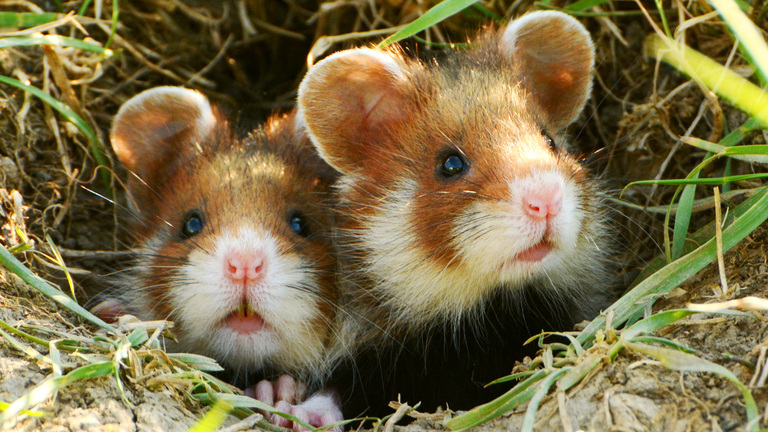Characteristics of Various Hamster Breeds
Hamsters are adorable, small pets that come in various breeds, each with unique characteristics. Understanding these differences can help potential owners choose the right hamster for their lifestyle. In this article, we’ll explore the specifics of several popular hamster breeds, examining their traits, care requirements, and temperament. Additionally, we’ll discuss how to incorporate these pets into your home, ensuring they thrive. Below, you will find detailed descriptions of the most recognized hamster breeds along with helpful visual references.
Syrian Hamster: The Gentle Giant
The **Syrian hamster**, also known as the golden hamster, is the largest and most popular breed among pet owners. Adults can weigh up to 150-200 grams and measure about 6-7 inches in length. Their gentle personality makes them ideal for families, particularly with children. Syrians are solitary creatures, preferring to live alone; thus, it’s important not to house them with other hamsters to avoid territorial disputes.

Care Requirements for Syrian Hamsters
Ensuring your Syrian hamster has a happy life requires specific care. They need ample cage space with bedding material that allows burrowing, toys for mental stimulation, and a balanced diet primarily consisting of hamster pellets, fresh fruits, and vegetables. Regular handling can also help them become more social and less stressed.
Temperament and Behavior
Typically, **Syrian hamsters** have calm demeanors, which can vary among individuals. They often enjoy interacting with their owners and might even learn a few tricks. However, they can become nippy if frightened or improperly handled, making it essential to socialize them regularly when they’re young.
Dwarf Hamsters: The Active Acrobats
Dwarf hamsters come in several variations, including the **Roborovski**, **Campbell’s**, and **Winter White**. They are smaller than Syrian hamsters, weighing just 30-50 grams and measuring 3.5-4 inches. Their tiny stature and playful nature make them delightful companions, but they can also be more challenging to handle due to their active nature.

Caring for Dwarf Hamsters
Due to their small size, dwarf hamsters require a slightly different habitat compared to Syrian hamsters. A spacious cage with multiple levels is ideal since they love climbing. They should be fed a seed mix designed specifically for dwarfs, which may include grains, vegetables, and proteins. Fresh water must also be accessible at all times.
Interaction and Handling
Dwarf hamsters are known for their energetic personalities and can be quite social with each other if housed in pairs or small groups. However, they might not be the best choice for young children, as their faster movements can make them hard to catch and handle safely. Education and patience are key when bonding with these tiny creatures.
Chinese Hamster: The Unique Contender
The **Chinese hamster** stands out for its distinct appearance and playful personality. With a body length of around 3-5 inches and a unique long tail, they typically weigh about 50-150 grams. This breed is known for being friendly and social, making them interesting pets for first-time owners.

Ideal Habitat for Chinese Hamsters
Chinese hamsters require a habitat that allows for climbing and hiding. Use a solid bottom cage with tunnels and hiding places, ensuring they feel secure. Their diet should consist of premium hamsters pellets supplemented with small amounts of fruits and vegetables for variety.
Chinese Hamster Personality Traits
Chinese hamsters generally exhibit a sociable nature. Unlike many other hamster breeds, they can sometimes be kept in pairs, especially if they are littermates. They are also relatively easy to train, enjoying playtime and interaction with their owners, making them an excellent option for families.
Comparative Overview of Hamster Breeds
Each of the various hamster breeds exhibits different characteristics and care requirements. Understanding these traits can aid potential hamster owners in making informed decisions. For instance, while Syrian hamsters may be preferable for children due to their size and ease of handling, dwarf hamsters can be better suited for those who appreciate active and curious pets.

Key Takeaways
- Syrian hamsters are best suited for solitary living and families, known for their gentle nature.
- Dwarf hamsters are active and social, but require careful handling due to their small size.
- Chinese hamsters offer a unique combination of playfulness and sociability, great for family settings.
- Each breed has specific care needs, which should be thoroughly understood before becoming a pet owner.
FAQ
1. What is the best hamster breed for beginners?
For beginners, the **Syrian hamster** is often recommended due to its larger size and easier handling. They typically have a calm demeanor and can become friendly with regular interaction. Conversely, dwarf hamsters might require extra patience, as they are smaller and quicker.
2. Can hamsters be kept in pairs?
While some breeds, like **Chinese hamsters**, can be kept in pairs if they are littermates, others, such as Syrian hamsters, are solitary and should always be housed alone to prevent fighting and stress.
3. How often should I clean my hamster’s cage?
Typically, hamster cages should be cleaned once a week. Regular maintenance involves spot cleaning daily to keep the living space hygienic, removing soiled bedding, and replenishing food and fresh water to ensure your pet’s health.
4. What is the dietary requirement for hamsters?
Hamsters require a balanced diet primarily consisting of high-quality hamster pellets with occasional fresh fruits and vegetables. Ensure you provide small portions of treats to maintain their health while avoiding overfeeding, which could lead to obesity.
5. How can I tell if my hamster is healthy?
A healthy hamster typically exhibits a bright coat, active demeanor, and appropriate weight for its breed. Regular behavior observations, along with proper diet and habitat, help ensure your hamster’s well-being. If you notice lethargy, weight loss, or unusual behavior, consult a veterinarian immediately.
